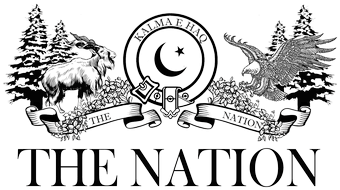On 22nd March 2024, the well-known political giant of India Arvind Kejriwal, CM of Delhi, was arrested on a fraudulent case of excise policy by the Enforcement Directorate (ED). He was the first sitting Chief Minister who was arrested ahead of a general election in India which is going to be held from 19 April 2024 to 1 June 2024. Furthermore, India’s largest opposition party- the Indian National Congress- bank accounts were frozen so it would unable to carry out its election campaign. Indian Congress has also faced a colossal fine of Rs.17bn by the income tax department ahead of the general election. There are also reports in the air about how candidates of opposition parties are being harassed by ED. All of these trends show two things: Indian democracy is in the decline and PM Modi is afraid of Opposition Party Alliance INDIA.
There is no doubt in saying that since the arrival of PM Modi in Delhi, India is no longer a liberal and secular democracy. PM Modi and his political party BJP largely operated on the ideology of Hindutva, which is explicitly defined by my previous article in this newspaper. Therefore, PM Modi has seen any kind of opposition from the minority, media, civil society, and opposition as a threat to his Hindutva goals and must be crushed by using hard tactics of government agencies. The V-Dem report finds that India has ceased to exist as a liberal democracy under PM Modi. As per its latest finding, India has been placed as an “electoral autocracy”, which placed the Indian state of democracy under PM Modi as similar to Indira Gandhi’s state of emergency (1975-77). Additionally, other major international-ranking outlets are also drawing the same conclusion about the Indian state of democracy. A scared dictator wants to lead a lifeless democracy: a recent tweet by Rahul Gandhi. According to him, opposition politicians are being threatened, money is used to overthrow governments and politicians are thrown into Jail by the Modi government. Remember that Rahul Gandhi faced a deformation case due to an uprising of his political stature as he completed the Bharat Jodo Yatra (2022-2023).
Now let’s talk about Indian media. Indian media has become the mouthpiece of PM Modi and the BJP party and often labelled other opposition as “traitors”. According to the findings of Al-Jazeera (2024), most Indian media outlets have branded Modi as the Hindu supreme leader and campaigned their political narratives. They polarised each debate on the dimensions of Pakistan vs India, Hindu vs Muslim, and Mosque vs Temple. In doing so, the alliance between PM Modi and Indian media has become a win-win situation for them.
That’s why independent journalists called this phenomenon “Godi Media”. According to famous Indian Journalist Karan Thapar, Godi Media is largely responsible for polarising Indian politics and society, breaking the idea of inclusive India. As per upright Indian famous journalist Ravish Kumar, it is dangerous times to be a journalist in Modi’s India as he lost his prime time show on NDTV when the media outlet was overtaken by a friend of Modi Gautam Adani, an Indian billionaire business magnate. Therefore, one should not be surprised at Indian Press Freedom (2024) which ranks India at 161th out of 180 countries, the lowest in South Asia.
Apart from Indian media, according to Indian experts, Indian civil services and lower judiciary are now in tight control of PM Modi. This leads to total control and total surrender of the Indian Executive branch before Modi. Furthermore, the Indian Election Commission, which supposed to be an independent body, now its members are appointed by Modi and Shah. All of these trends indicate that Modi has become a civilian dictator of India who wants to control everything within India.
It is also worth mentioning what happened in Indian-Occupied Kashmir and Manipur during the second tenure of PM Modi. On 5th August 2019, 35A and 370 of the Indian Constitution, which guaranteed semi-autonomous status to Indian Occupied Kashmir, were revoked and Kashmir was placed under severe curfew. This is followed by gross root human rights violations in Kashmir which are well documented by International outlets and these grim measures also alienate pro-Delhi Kashmiri Politicians. Even Farooq Abdullah, the well-known political figure and former CM of J&K, regretted his father’s decision to join India rather than Pakistan.
The same happened in Manipur. On 3rd May 2023, ethical violence erupted between Meithei and Kuki-Zo tribal. According to the Indian government, 175 people have been killed 1,018 others are injured and 386 religious structures were vandalised, most of them churches. Despite all of these, PM Modi remained silent on Manipur violence, signaling to minorities that India belongs to Hindus only.
Another fault line that emerged during Modi’s tenure is growing divisions between North and South. Southern states of India, which are not ruled by the BJP, are much advanced in education, healthcare and technology but are being sidelined and declined proper share in revenue by the central government of India. This also casts a dark shadow on the future of Indian democracy.
All of the above arguments depict that all is not well in India and India has embarked on the trajectory of Hindu Rashtra. This has far-reaching grim consequences for Indian minorities, opposition, politics, civil society, region and beyond. PM Modi and BJP have ideological goals for Indian democracy in his upcoming three tenure, which casts a dark shadow on the largest democracy on the earth. Therefore, Pakistan has to remain vigilant and prepare ahead of the general election in India.
Sher Ali Bukhari
The writer is a UET alumni with keen interest in Pakistan’s foreign policy.





